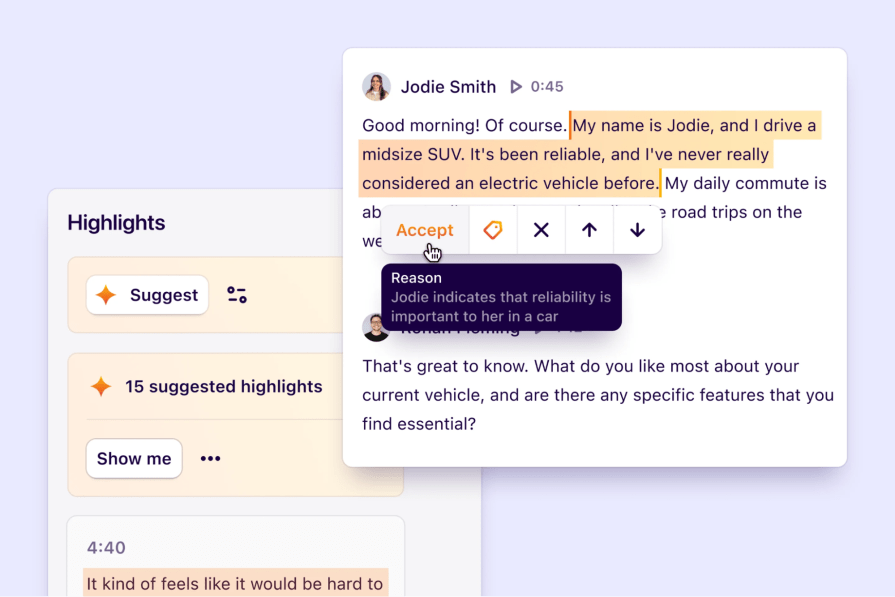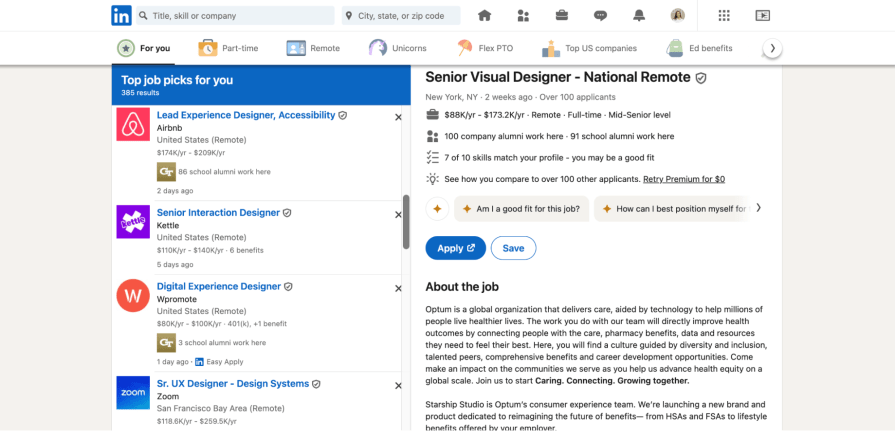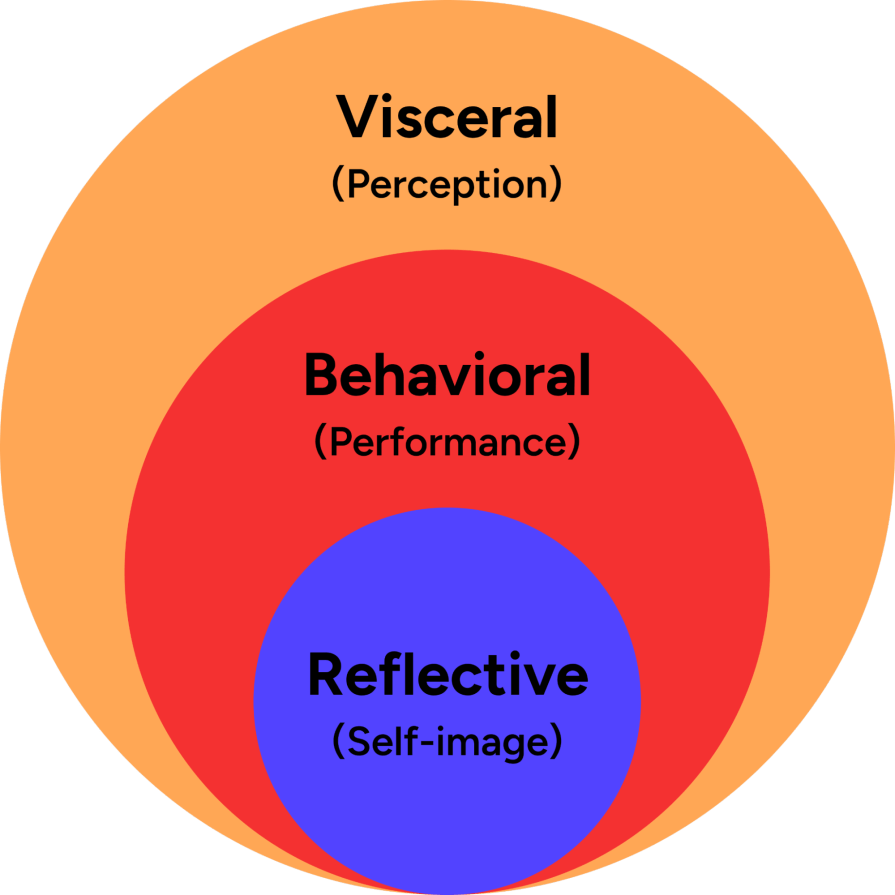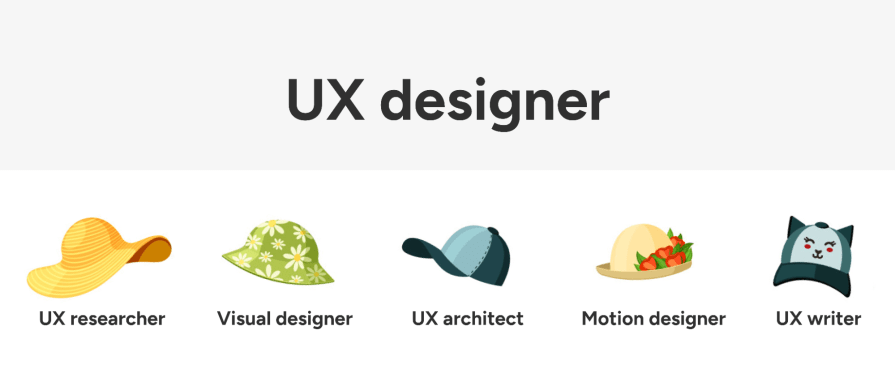
The UX industry is facing uncertainties like continuous layoffs and new AI tools being introduced daily, making it hard to be confident in its future. Is AI going to replace UX designers? Will UX design even be a career by 2030? What is the future of UX design?
Since UX design falls under the umbrella of the tech industry, we designers confront uncharted territory as innovations disrupt the tech realm every 10 to 20 years. It’s overwhelming and frightening, but it’s also mind-blowing and thrilling.
Think of some major tech disruptions — the release of the first successful PC (Altair 8800) in 1974, the reveal of the World Wide Web in 1989, and the announcement of the Apple iPhone in 2007. Each revolutionized how we interact with technology and paved the way for the next.
These same disruptions gave rise to UX design. As personal computers, websites, and mobile phones became a significant part of our lives, companies like Microsoft and Apple had to ensure people could actually use the interfaces they were creating. Before UX had an official title, these companies were performing work that could be classified as UX design. In fact, the term “user experience” itself wasn’t coined until Don Norman introduced it in 1988, and it took years before companies adopted it officially.
But clearly — as the tech industry evolves, so does UX design.
This blog is a personal reflection on the future of UX design. I’ll discuss current trends impacting the UX field, the possible future of UX design, and how you can future-proof yourself as a UX designer.
Current trends in the UX industry
I’ll start from zero. I’ll review some of the key trends shaping the UX industry. And while there are many — like hyper-personalization and virtual reality —I’ll discuss three of the most debated trends:
AI
We’ve all thought, “Will AI replace me?” So, talking trends? AI and automation will come up.
For the future of UX design specifically, the rise of AI will transform the standard design process and raise several ethical concerns.
As more AI tools are introduced and as they become more advanced, manual tasks are being allocated to AI. AI can now create wireframes or high-fidelity mockups from prompts and synthesize user data to create themes and insights.
So, tasks that UX designers and researchers typically do are being automated. As a pro, designers and researchers are more productive since the time to complete tasks is reduced from hours to seconds. However, as a con, this can make designers and researchers seem redundant in the business’s eye, making UX roles susceptible to layoffs.
As design and research processes change to incorporate AI tools, delivering value through strategic and intentional UX decisions is more important than ever.

AI brings automation, but it also brings ethical concerns.
Since AI is a new technology introduced to digital products, many unknowns exist about how to best mitigate bias and gain the user’s trust.
Bias in AI training models and algorithms, for example, negatively impacts the user’s experience by preventing users from accessing certain services or information—essentially, excluding users.
AI also faces issues of transparency and trustworthiness. Users must feel in control of their experience. When AI is used during a task flow, the user must be made aware and can opt-out.
It’s the same with using user data from a digital product to train an AI model; there must be transparency and honesty. For instance, LinkedIn recently opted for all users to train their AI model with no notice. This left many users thinking LinkedIn is shady. They’re now concerned about their data privacy. So take this as a lesson learned from LinkedIn and ensure your digital products keep ethics in mind when using AI in design.
Job market
It’s gotten to the point where it’s surprising if we go a month without a big tech company announcing significant layoffs that impact many UX-related roles. Companies like Microsoft, Intuit, and Cisco have each implemented a wave of layoffs in the last few months. Each company layoff pushes more people into the job market and shrinks the remaining design team (assuming any survivors).
This has caused a saturated job market for UX roles, especially for junior designers. Because design teams are scarce and lean, companies don’t have the resources to train and mentor entry-level designers. But since we’re in an “employer’s market,” all seniority levels are affected. It only takes a few hours for a job posting to receive hundreds of applicants, leaving many rejected or ignored.

Not only is the UX job market incredibly competitive, but companies are posting fake or “ghost” job postings on LinkedIn. This LinkedIn trend is where a company posts an open position even when there isn’t one. Why do they do this? to promote the company by getting brand engagement with potential applicants and making it look like the company is growing to the investor’s eye.
Not to mention, LinkedIn doesn’t regulate these fake job postings, making job-seeking even more frustrating.
And though we may not return to an “employee’s market” anytime soon, there’s optimism in seeing new UX-related job posts every day (at least those that aren’t fake). Uncertainty brings challenges, but it also brings opportunities. Let’s keep our fingers crossed for an upturn in the job market.
Design for the ecosystem
There’s also a shift in approaching design from the atomic level to the entire ecosystem.
Instead of focusing on their individual piece of a digital product, such as a specific feature of an experience, designers now focus on ensuring the connectedness of the entire product’s experience. This allows designers to solve more complex problems and have a strategic mindset while doing so.

This is caused by the commoditization of UI. Many interfaces today look and feel the same. Think of SaaS tools or social media apps like Slack and Instagram — they all share familiarity.
So, as the importance of the UI decreases, so does the importance of the digital product’s UX. The product must prioritize a holistic approach to ensure the UX is seamless, especially when the system is complex.
The small, atomic pieces of the UX still matter; you just need to design with the entire product in mind.
Ask questions such as, “What screen(s) does the user see before they get here?” “Is there consistency between screens?” and “Does the user journey flow from my piece to the next? “Asking these questions helps you view one piece of the puzzle within the finished image.
What is the possible future of UX design?
I don’t have a crystal ball, of course. But it’s fair to use the current trends as well as what has happened after past tech disruptions and make educated guesses. The past shows that industries adapt, and the most essential and invaluable aspects found in those industries are what last.
That being said, I’ll now talk about three trends I predict will guide the future of UX design:
AI will be a partner
AI is here to stay, but we need to view it more as our partner than our competitor. It’s getting more advanced every day and has (or will have) the capability to do parts of your job. Instead of worrying about remaining relevant at your company, use AI to your advantage.
Show your value by using AI to produce more design iterations and different research approaches or by asking AI for its opinion on your work.
To see this partnership in effect, take the medical field as an example. AI is used to detect multiple types of cancer, like lung and breast cancers. But when AI spots a sign of cancer, the patient isn’t immediately notified by an AI bot. Instead, the doctor reviews the AI’s conclusion to accept or challenge it. It’s more rewarding to view AI as an ally instead of an enemy.
Emotional design will occupy more space
As AI begins to take over certain aspects of the design process, we will need to ensure that emotional design is still considered in digital products. As AI commodifies UI, so aesthetics will become less important in differentiating a product’s experience.
Designs will need to connect with the user’s emotions. And connect not only on one but three levels:
- Visceral — referring to the way a design is perceived by the user in how it looks and feels
- Behavioral — referring to the performance of a design, like how fast and effortlessly the user can complete a task
- Reflective — referring to the meaning of a design for the user’s self-image and expression
Though the visceral and behavioral levels contribute to the reflective level, prioritizing the reflective level will separate one product experience from another.

Strategic thinking will become crucial
Looking at digital products with a holistic view will be critical — and so, strategic design thinking skills will be necessary.
Instead of focusing on a singular part of the product, you’ll need to understand the entire picture. This will require developing a systems-thinking approach to design, collaborating with different teams that contribute to the product, and creating a long-term plan for product growth. It’s easier said than done, yes, but designing through a strategic lens will enhance decision-making, problem-solving, and innovation.
How can you future-proof yourself?
With the UX industry’s current trends and the ambiguity of its future, it can be frightening to think about how to stay relevant to the UX field and your business.
But since we know what the trends are and have educated guesses on what the future may hold, we can take action to future-proof ourselves as UX designers:
Think versatility over specialization
Although there’s a tendency to specialize in one sub-field of UX design, such as interaction design or UX writing, design teams are leaner due to layoffs and restructuring. So, designers will need the ability to adapt to the team’s needs. One week, the team may need research. Next week, the team may need a motion designer.
A designer who can demonstrate versatility will be more desirable in the job market. Continue to learn as existing technology grows and new technology emerges. Take online courses, earn certifications, and share new knowledge with teammates.
One of the best ways to future-proof yourself is to remain open-minded to the future and readjust to its circumstances.

Look outside of big tech
Speaking of being desirable in the job market, it’s incredibly hard to do so when so many talented people are hunting for the same UX roles. The job market is saturated and will continue to fluctuate throughout the years.
Many of us have the same goal of working for a big tech company, but with so many people applying for those positions, you’re less likely to even be considered (a hard reality, but true).
Instead of focusing on applying to big tech roles, focus on applying to roles outside of big tech, such as healthcare or the government.
Who knows? You might enjoy working in those industries more than you would at, say, Google or Amazon.
Connect design and business language
Finally, as all company departments (UX included) continue to be susceptible to force reductions, it’s important to create and deliver measurable results that align with business objectives. So, it’s time to amp up some business acumen skills.
Take the time to better understand your company’s short- and long-term goals, identify what key metrics matter most to stakeholders, and connect these goals and metrics to design stories that advocate for the user.
This may also require boosting your financial literacy (profits, budgets, gross margin, oh my!), but it will strengthen design outcomes while proving the value the UX team contributes to the company.
Conclusion
Working in the tech industry makes us vulnerable to innovative disruptions and the transformations they bring. However, UX design was born from these transformations and will evolve as new disruptions emerge.
As the UX industry faces many unknowns in the future due to AI and automation, it’s comforting to know that people from all industries are wondering how AI will impact their jobs.
When speculating about the UX industry’s future, we can use today’s trends to make educated guesses. Trends like AI, a saturated job market, and a shift to design for the product’s ecosystem are showing that change is already happening. However, using AI as a partner, being open-minded to UX-related opportunities, and developing a strategic mindset will prepare you for now and the future.
You can also take other actions to future-proof yourself as a UX designer. Instead of specializing in one sub-field of UX, continue broadening your skill set to adapt to your team’s (or future team’s) needs. If you have been impacted by a recent layoff or are looking for a new opportunity, look beyond big tech companies and apply to industries you haven’t considered working in. Also, it’s worthwhile to spruce up your financial savviness by connecting design decisions to business metrics to validate the design team’s worth to a company.
Change is uncomfortable, but it forces us to adapt for the better. As you future-proof yourself, you will not only go outside your comfort zone but may be surprised by how much interest you develop in a new skill or domain.
And know that trends will come and go, but the overall goal of providing the user with the best experience will remain in the future of UX design.